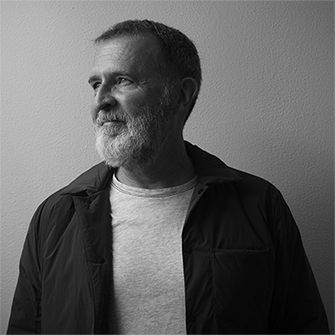
Mark Wamble is a founding principal of Interloop—Architecture and has over twenty–five years of experience in architectural practice. He is a licensed architect in the State of Texas. Wamble received a Bachelor of Environmental Design from Texas A&M University and a Master of Architecture from the Graduate School of Design at Harvard University.
Prior to establishing Interloop—Architecture, Wamble worked as a Project Designer, and later as Project Architect, with Eisenman Architects in New York (1983-1991) where he was on the design team for the Wexner Center for the Visual Arts at Ohio State University in Columbus, Ohio. Wamble was also Project Architect on the Columbus Convention Center in Columbus, Ohio, and on three office buildings in Tokyo, Japan. With his team at Eisenman Architects, Mark designed the winning scheme for the international Rebstockpark Competition in Frankfort, Germany. In the early 1990s, Mark was selected for 40 Under 40, a prestigious award given to emerging young architects in the United States. Later that year, he won the Young Architect Award from the Architecture League of New York.
In 1994, prior to collaborations with Dawn Finley, Wamble formed the research practice Interloop Architects in Houston, Texas, and was commissioned to design the Gardiner Symonds Teaching Labs I & II, a series of technology–based teaching facilities for Rice University. Wamble then became a Design Principal and Partner at Bricker+Cannady Architects in Houston (1997-2001) where he designed the Renovation of Jones Plaza in Downtown Houston, a significant urban project that won an AIA award and a Progressive Architecture (PA) Award both in 1999. Jones Plaza was also published with two other urban park projects designed by Mark Wamble in an Architecture magazine feature “Portfolio” article in 2002.
Wamble combines professional practice with academics. He is a Professor in Practice at Rice University School of Architecture and has served as a visiting professor at the University of Michigan, Harvard University, and Columbia University. His current academic research includes advanced structural models for urban high-rise buildings and New Type Here, a design project funded by a grant from the Kinder Institute for Urban Research examining new building types in response to urban context and adaptive re-use as an alternative to historic preservation.






























































